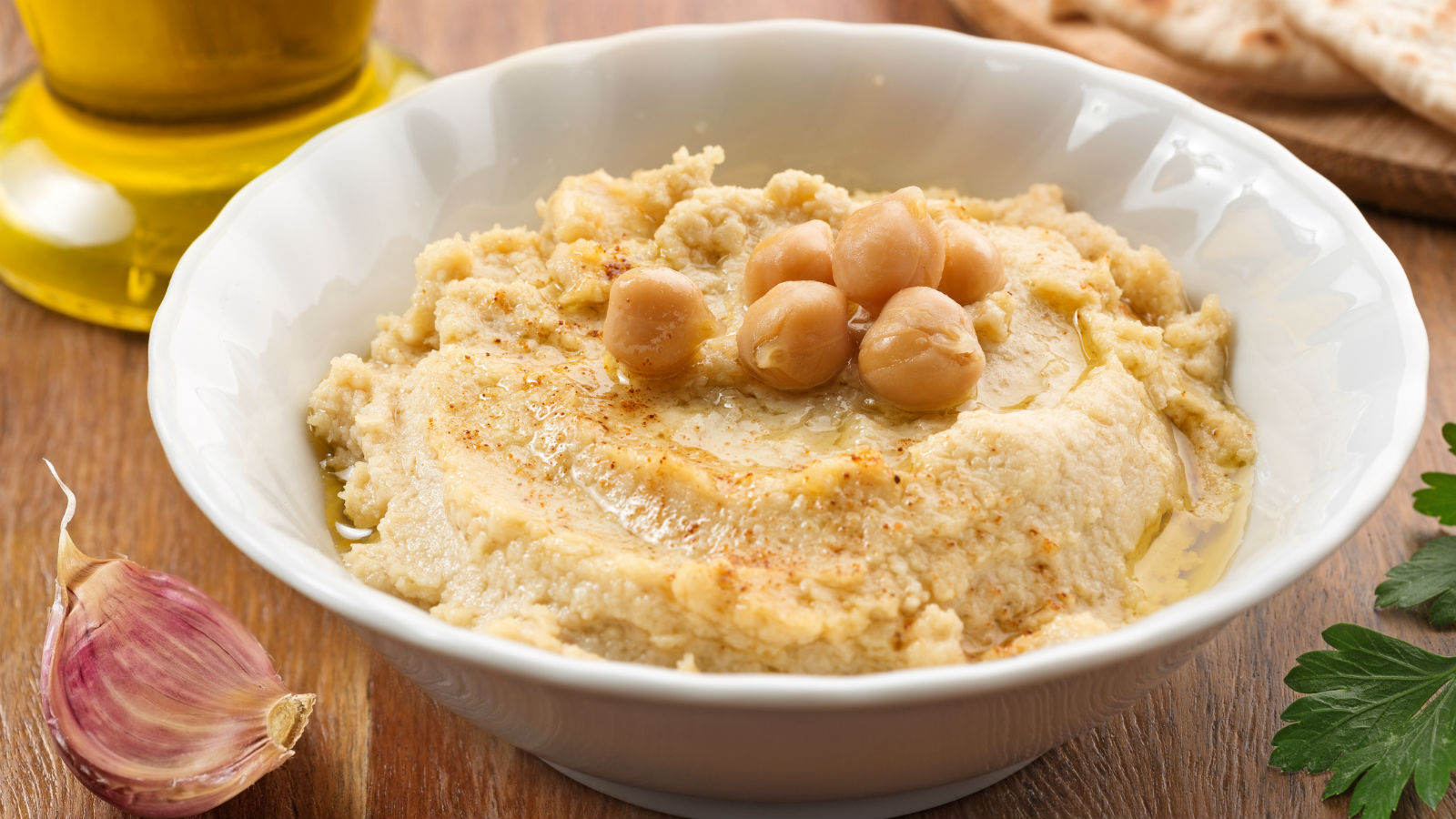Roasted Garlic Hummus
Hummus with a rich but subtle flavor.
While chickpeas–with their tiny stature and unassuming flavor–maintain a humble persona, their significance throughout history commands serious respect.
One of the earliest plants to be domesticated for human use, chickpeas were first planted along with wheat, barley, lentils, and other ancient grains and legumes in the Fertile Crescent some 10-12,000 years ago. Fittingly, chickpeas have long been a staple of Middle Eastern cuisine, found in everything from stews and savory pies to fritters to spreads
Hummus, which literally means “chickpeas” in Arabic, is arguably the most popular recipe in the chickpea canon. The exact origins of this spread of smashed chickpeas softened with tahini and olive oil are unknown, but likely stretch back for centuries. Hummus continues to be a favorite throughout the Middle East, including Israel where, as Janna Gur writes in The New Book of Israeli Food, “Israelis hold hummus in such high regard that it is rarely made at home.” Instead, she writes, residents flock like pilgrims to their favorite hummusia (hummus joint) for plates of warm hummus topped with fava beans or a hardboiled egg and accompanied by plates of pickles and fluffy stacks of pita.
Vegetarians and health food enthusiasts like Mollie Katzen first helped to introduce the protein-packed spread to the American palate in the 1960s and 1970s. Today it is nearly ubiquitous: Sabra is becoming a household-recognized brand, hummus and pita platters show up next to mozzarella sticks and nachos on diner menus, and the dip has become a familiar-enough cultural reference to carry scenes in major motion pictures (i.e. the infamous “hummus scene” in Don’t Mess with the Zohan).
The New York Times published an article discussing hummus’ growing popularity in the United States, especially flavored versions that add savory mix-ins like sun-dried tomatoes, roasted red peppers, and avocado. MyJewishLearning.com’s blog Mixed Multitudes mentioned a New Hampshire-based company that launched a line of dessert hummus that includes flavors like caramel apple, chocolate mousse, and pumpkin pie. The three recipes below do not take hummus innovation to such extremes, but do offer some unexpected twists on the classic.
Of course, purists can make their own traditional hummus by following this recipe.
Drizzling garlic with olive oil and roasting it in the oven mellows its spicy kick, leaving behind the rich-but-subtle garlicky essence that flavors this dip.
You might also like these variations:
Black Bean Hummus
Lima Bean Hummus with Toasted Peanuts
Ingredients
1/2 teaspoon salt
1/4 cup flat-leaf parsley leaves, chopped
juice of one lemon
2 Tablespoons tahini
1 15-oz can chickpeas, rinsed and drained
1/4 cup plus 3 Tablespoons olive oil, divided
1 whole garlic bulb
Directions
Preheat oven to 400. Slice off the top of the garlic head, exposing the tops of the cloves. Place in a shallow baking dish; drizzle with one tablespoon of olive oil, wrap lightly with aluminum foil, and bake for 25-30 minutes. Remove from the oven and let cool; set aside.
Place chickpeas, remaining 1/4 cup plus 2 tablespoons olive oil, tahini, lemon juice, salt, and parsley into a blender or food processor. Squeeze cooled garlic cloves out of their shells and into the blender. Blend/process until smooth, stopping to scrape down the sides as needed. Store in an airtight container in the fridge



